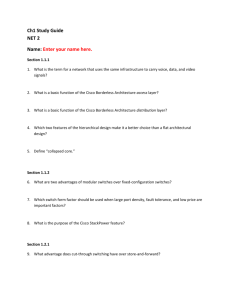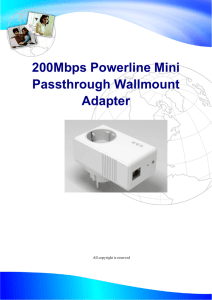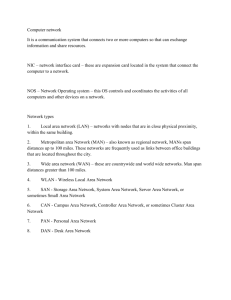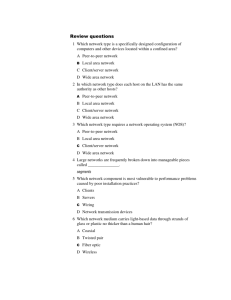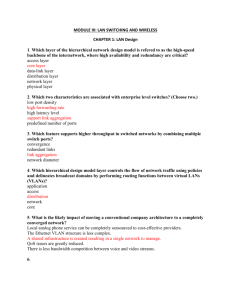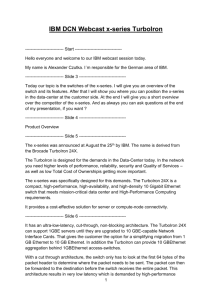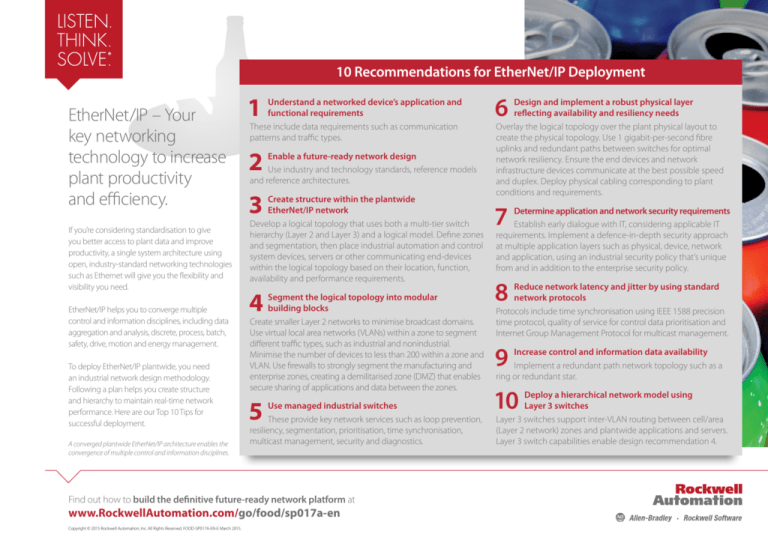
10 Recommendations for EtherNet/IP Deployment
EtherNet/IP – Your
key networking
technology to increase
plant productivity
and efficiency.
If you’re considering standardisation to give
you better access to plant data and improve
productivity, a single system architecture using
open, industry-standard networking technologies
such as Ethernet will give you the flexibility and
visibility you need.
EtherNet/IP helps you to converge multiple
control and information disciplines, including data
aggregation and analysis, discrete, process, batch,
safety, drive, motion and energy management.
To deploy EtherNet/IP plantwide, you need
an industrial network design methodology.
Following a plan helps you create structure
and hierarchy to maintain real-time network
performance. Here are our Top 10 Tips for
successful deployment.
A converged plantwide EtherNet/IP architecture enables the
convergence of multiple control and information disciplines.
1
Understand a networked device’s application and
functional requirements
These include data requirements such as communication
patterns and traffic types.
2
Enable a future-ready network design
Use industry and technology standards, reference models
and reference architectures.
Design and implement a robust physical layer
reflecting availability and resiliency needs
Overlay the logical topology over the plant physical layout to
create the physical topology. Use 1 gigabit-per-second fibre
uplinks and redundant paths between switches for optimal
network resiliency. Ensure the end devices and network
infrastructure devices communicate at the best possible speed
and duplex. Deploy physical cabling corresponding to plant
conditions and requirements.
3
7
4
8
Create structure within the plantwide
EtherNet/IP network
Develop a logical topology that uses both a multi-tier switch
hierarchy (Layer 2 and Layer 3) and a logical model. Define zones
and segmentation, then place industrial automation and control
system devices, servers or other communicating end-devices
within the logical topology based on their location, function,
availability and performance requirements.
Segment the logical topology into modular
building blocks
Create smaller Layer 2 networks to minimise broadcast domains.
Use virtual local area networks (VLANs) within a zone to segment
different traffic types, such as industrial and nonindustrial.
Minimise the number of devices to less than 200 within a zone and
VLAN. Use firewalls to strongly segment the manufacturing and
enterprise zones, creating a demilitarised zone (DMZ) that enables
secure sharing of applications and data between the zones.
5
Use managed industrial switches
These provide key network services such as loop prevention,
resiliency, segmentation, prioritisation, time synchronisation,
multicast management, security and diagnostics.
Find out how to build the definitive future-ready network platform at
www.RockwellAutomation.com/go/food/sp017a-en
Copyright © 2015 Rockwell Automation, Inc. All Rights Reserved. FOOD-SP017A-EN-E March 2015.
6
Determine application and network security requirements
Establish early dialogue with IT, considering applicable IT
requirements. Implement a defence-in-depth security approach
at multiple application layers such as physical, device, network
and application, using an industrial security policy that’s unique
from and in addition to the enterprise security policy.
Reduce network latency and jitter by using standard
network protocols
Protocols include time synchronisation using IEEE 1588 precision
time protocol, quality of service for control data prioritisation and
Internet Group Management Protocol for multicast management.
9
Increase control and information data availability
Implement a redundant path network topology such as a
ring or redundant star.
10
Deploy a hierarchical network model using
Layer 3 switches
Layer 3 switches support inter-VLAN routing between cell/area
(Layer 2 network) zones and plantwide applications and servers.
Layer 3 switch capabilities enable design recommendation 4.

